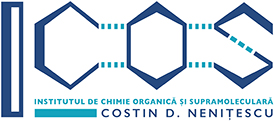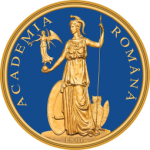DFT calculations as design tool for OER and ORR nanocatalysts for renewable energy applications
(NanoCatDFTOERR)
Project ID: PN-III-P1-1.1-TE-2021-0931
Projector leader: Traistaru (Man) Isabela-Costinela
Project type: National Funding
Project program: Research projects to stimulate the establishment of young independent research teams – TE competition 2021
Funded by: Unit Executive for Funding Higher Education, Research, Development and Innovation
Contractor: "Costin D. Nenitescu" Institute of Organic and Supramolecular Chemistry, Romanian Academy
Start date: 01 October 2022
End date: 30 September 2024
Project abstract: Oxygen evolution(OER) is the key reaction to enable the storage of solar/wind energy in the form of hydrogen fuel through water splitting while oxygen reduction(ORR) is the key reaction to transform the hydrogen fuel back to renewable electricity. The maturation of these devices is still hindered by the difficulty of finding electrocatalysts that are inexpensive, earth abundant, exhibit high catalytic activity and are stable under reaction conditions. Mixed spinel oxides (i.e. CoFe2O4) and N or Fe/Co-Nx doped graphene are predicted as promising catalysts for OER and ORR, respectively. Even if progress has been made, they are still far from the state-of-the-art requirements. Experimental evidences show that their nano structuring (i.e. 2D nanosheets, decreased nanoparticle sizes of CoFe2O4, graphene quantum dots (GQD) etc.) further increase their activities. The NanoCatDFTOERR aim is to understand from theoretical point of view the systems of which dimensions are reduced to quantum dot size regime, where each atom counts and to propose new catalytic systems of this size for OER/ORR. The quantum chemical calculations will be used to examine the structure sensitivity of OER on spinel oxide (CoFe2O¬4)x(1-4) clusters up to 30 atoms and of ORR on N/Fe/Co-Nx doped and undoped GQD of different shapes of increasing sizes (up to 100 C atoms). The main goal is to identify the active sites on each structure, the most active structures and to establish activity-size/activity-shape trends.

Figure 1 From left to right: Left - Diagram of a low temperature electrolysis cell (PEMEC) - with representation of two CoFe2O4 catalyst clusters (colouring scheme: red –oxygen ,orange-iron, pink-cobalt), centre - the cycle of hydrogen production and consumption using renewable energy sources, together with the representation of the volcano activity plot, right - proton exchange membrane fuel
Objectives
O1. Design (CoF2O4)x=(1-4) spinel oxide type clusters, find the active sites and investigate the effect of size and shape of the studied structures on the electrocatalytic activity for OER
O2. Design graphene quantum dots (GQD) of different sizes and shapes, undoped and doped with N and Fe/Co-Nx and investigate their potential electrocatalytic activity for ORR
Team members
Project manager:
Traistaru(Man) Isabela-Costinela
Email: isabela.traistaru@icoscdn.ro, isabelac.man@gmail.com
Postdoctoral:
Dr. Stefan Gabriel Soriga
Email: stefan.soriga@gmail.com
Postdoctoral:
Dragos Lucian Isac
Email: isac.dragos@icmpp.ro
Master:
Jalba Raluca
Email: ralucajalba01@gmail.com
Master:
Emilian Rosca
Email: rremilian@gmail.com
Project progress final
Summary
The project aim was to investigate/understand/predict from theoretical point of view at atomistic level (few atoms - from 5 to ≈ 100 atoms), catalysts that might increase the efficiency of water splitting (or oxygen evolution reaction -OER) in the water electrolysers and of the oxygen reduction reaction (ORR) in the fuel cells. This translates in their possibility to increase the overall efficiencies of these devices. The investigated materials are the iron/cobalt oxide clusters (materials up to 28 atoms -see the structures in Figure 1) for water splitting and the graphene quantum dots for the fuel cells (see the structures in Figures 3,4,5 -carbon atoms (grey balls) – added together in a six atom hexagonal rings sticked together under larger triangular/hexagonal/rhombohedral forms – that have two type of edges – zigzag and armchair - of different sizes – from 13 to 144 atoms). All these investigated materials are so small that cannot be seen and their performance is given by specific atoms of part of the investigated structures. For each type of materials, we have predicted from theoretical point of view - active structures for both applications. For water splitting, the oxide cluster that comprise three atoms of cobalt, six atoms of iron and twelve atoms of oxygen (to be seen the structure Co3Fe6O12 in Figure 1) are predicted to perform the best. Among the best catalysts for the application in the fuel cells are the edges of the triangular graphene quantum dots that have zigzag edges, triangular and rhombohedral shapes with armchair termination in which one carbon atom was replaced with a nitrogen atom.
The objectives and the tasks and the obtained results are presented below:
O1. Design (CoF2O4)x=(1-4) spinel oxide type clusters, find the active sites and investigate the effect of size and shape of the studied structures on the electrocatalytic activity for OER with the two tasks:
T1.1 Design the most stable structures for each number of CoFe2O4 units (months 1 -12);
T1.2 Investigate the adsorption energies of OER intermediates on selected structures (months 12-22.5);
T1.3 Build the activity volcano plot to identify the most active sites for OER on the investigated (CoFe2O4)n=1-4 structures (O1(iii-iv), Months 22.5-24.5)
The design of the most stable structures of each unit of Co-Fe-O nanoclusters was performed using a global minimization algorithm implemented in ABC cluster package that uses force filed potentials. Than the most stable structures were further considered in calculations with the Gaussian software with UBPW91 functional and 6-311+g(d,p) basis set. Spin multiplicities were tested for each structure. Therefore, the most stable structures of CoFe2O4/Co2Fe4O8/Co3Fe4O12/Co4Fe12O16 were identified. See in Figure 1 the most stable isomers for each type of cluster (T1.1). For part of them the adsorption energies of OER intermediates (HO*/O*/HOO*) of Co and Fe sites were calculated on the as obtained structures using an implicit water model and for one cluster an explicit water model was used (T1.2) . The volcano activity plot was done (Figure 2). The best active sites are the ones placed as close to the top of the volcano plot or the ones that have predicted theoretical overpotentials as close as possible to zero (T1.3). A structure/size activity relationship is revealed. The least active ones are the sites of the Co3Fe6O12 cluster, while the most active sites are the ones of the Co2Fe2O8. For the Co4Fe8O12 the optimizations ended with the reorganization of the cluster.

Figure 1 - The most stable isomers of (CoFe2O4)n=1-4. Color atom labes – Co – blue, Fe-purple, O-red.
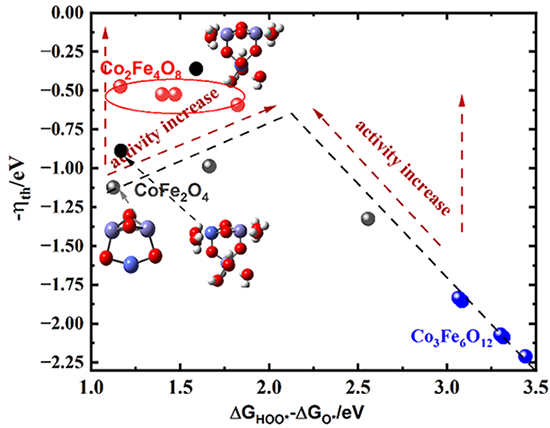
Figure 2 - The volcano activity plot for (CoFe2O4)n=1-3
O2 Design graphene quantum dots (GQD) of different sizes and shapes, undoped and doped with N and Fe/Co-Nx and investigate their potential electrocatalytic activity for oxygen reduction reaction (ORR) that comprises two tasks:
T2.1 Investigate the adsorption energies of ORR intermediates on the undoped GQD edges (m1-m10);
T2.2 Investigate the adsorption energies of ORR intermediates on N doped GQD basal plane and edges (started this stage m11 to m 15);
T2.3. Investigate the adsorption energies of ORR intermediates on Fe/Co-Nx doped GQD basal plane and edges (O2 (iv), Months 18-23)
T2.4. Identifying the most active sites on the undoped and doped GQD for ORR reaction (O2(vi-vii), Months 23-24)
The adsorption energy of ORR intermediates (HOO*/O*/HO*) were calculated on the edges of the undoped structures of rhombohedral, triangular and hexagonal shapes of sizes that ranges from 13 to 113 carbon atoms with zigzag and armchair terminations using the GPAW software that has implemented RPBE and BEEF-vdW functionals and an implicit water solvent model (T2.1). From each shape/termination was selected one structure (the size closest to 50 carbon atoms) and was N dopped on the edge and basal plane and the adsorption energies of the same ORR intermediates were calculated on the carbon atoms next neighbouring to N atom. A data base of adsorption energies was thus created (T2.2). For selected structures further investigations of the adsorption energies of the ORR intermediates were calculated on the Fe/Co-N4 doped GQDs. A data base of adsorption energies was created (T2.3). The investigated structures are displayed in Figures 3,4 and 5. Activity plots were done for each type of investigated materials (T2.4). The best sites are the ones that are placed closed to the top of the volcano (see Figure 6a, b, c).
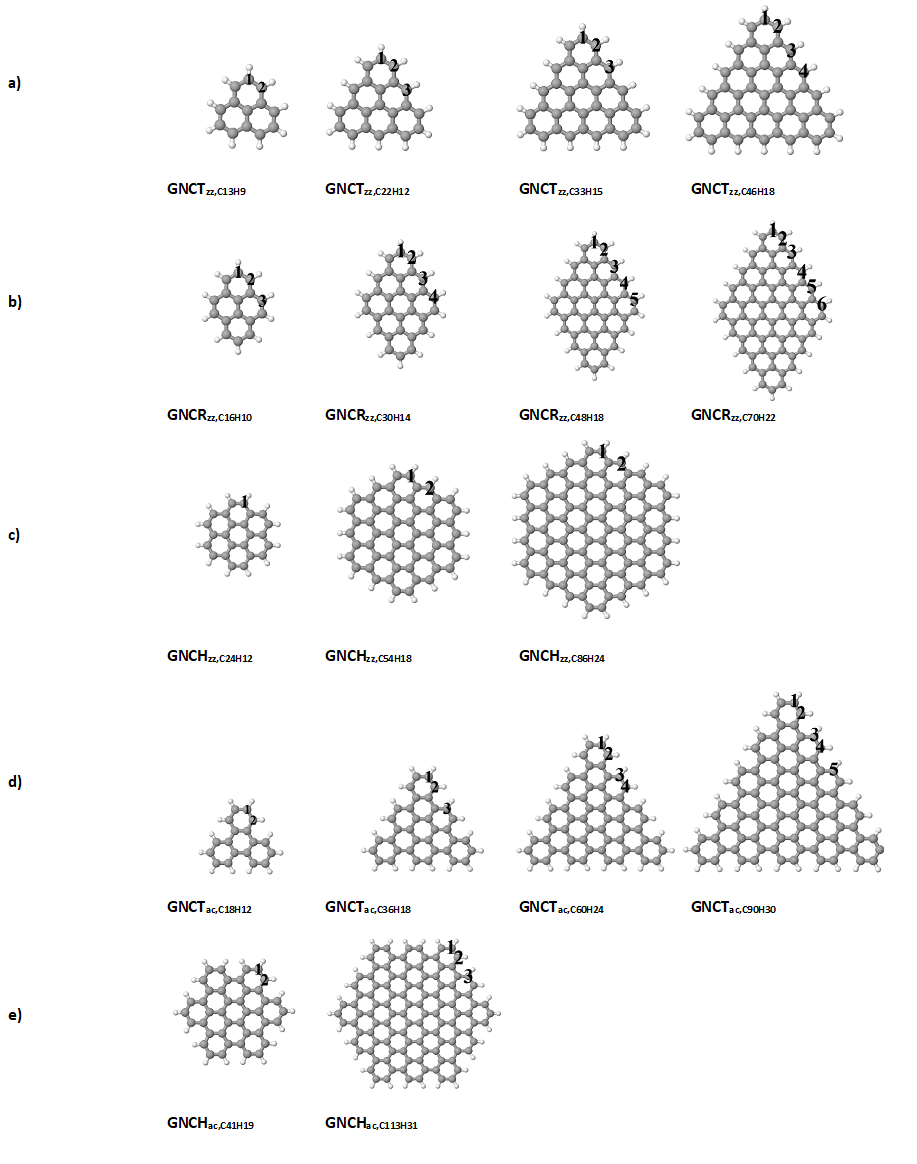
Figure 3 - Graphene nanoclusters considered in the study a) Triangles (GNCTzz) with zigzag terminations – 4 sizes b)Rhombohedral (GNCRzz) with zigzag terminations – 4 sizes c) hexagonal with zigzag terminations (GNCHzz) – 3 sizes d) Triangular (GNCTac) with armchair terminations – 4 sizes e) hexagonal (GNCHac) with armchair terminations – 2 sizes. Color code – gray – carbon atoms/ white – hydrogen atoms. The numbered edges represent the tested carbon sites.

Figure 4 - N doped GQD . Color codes blue- N atom, gray – C atom, white – H atom;
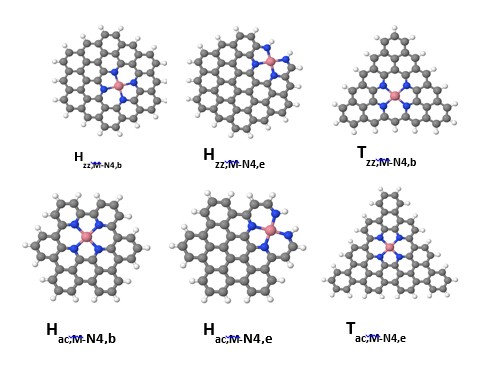
Figure 5 - Graphene quantum dots selected to be doped with Co/Fe-N4 fragments (notations: H - hexagonal, T - triangular, ac – armchair, zz – zigzag, b – basal plane, e - edge). Atoms labelling – C – gray, H - white, M(Co/Fe) – pink, N – blue;

Figure 6 - Activity plot volcano for a) edges of undoped GQDs b) N-doped GQDs c) Fe/Co-N4 doped GQDs.
Conferences:
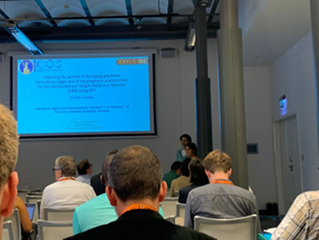 |
 |
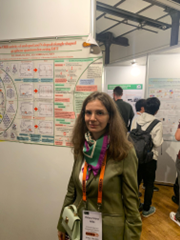 |
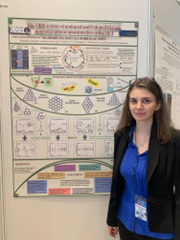 |
 |
1. Conference 36thEuropean Conference on Surface Science: 28 August – 1 Septembrie 2023, Lodz, Polonia.
Oral presentation “Exploring the activity of the zigzag graphene nanoribbon edges and of the graphene quantum dots for the electrochemical Oxygen Reduction Reaction using DFT” – Isabela Costinela Man, R.I. Jalbă, D.L. Isac, Y. Zhao, I. Trancă.
Poster: “The ORR activity of undoped and N-doped triagle shaped graphene quantum dots using DFT” - Raluca-Ioana Jalbă, D.L. Isac, S.G. Soriga, I.C. Man.
2. Conference: International Conference of Physical Chemistry – ROMPHYSCHEM – 17: 25 - 27 Septembrie 2023, Bucureşti, România.
Oral presentation: “Exploring the activity of the zigzag graphene nanoribbon edges and of the graphene quantum dots for the electrochemical Oxygen Reduction Reaction using DFT” – Isabela Costinela Man, R.I. Jalbă, D.L. Isac, Y. Zhao, I. Trancă.
Poster: “The ORR activity of undoped and N-doped triagle shaped graphene quantum dots using DFT” - Raluca-Ioana Jalbă, D.L. Isac, S.G. Soriga, I.C. Man.
3. Conference: XIX International Conference on Theoretical Aspects of Catalysis, 2-6th September 2024, Seville, Spain:
Articles:
Accepted
https://www.sciencedirect.com/science/article/pii/S2468823124004267?dgcid=author
https://www.sciencedirect.com/science/article/pii/S0008622324001611?dgcid=author
Others:
TV show at TVR cultural – minute 35
